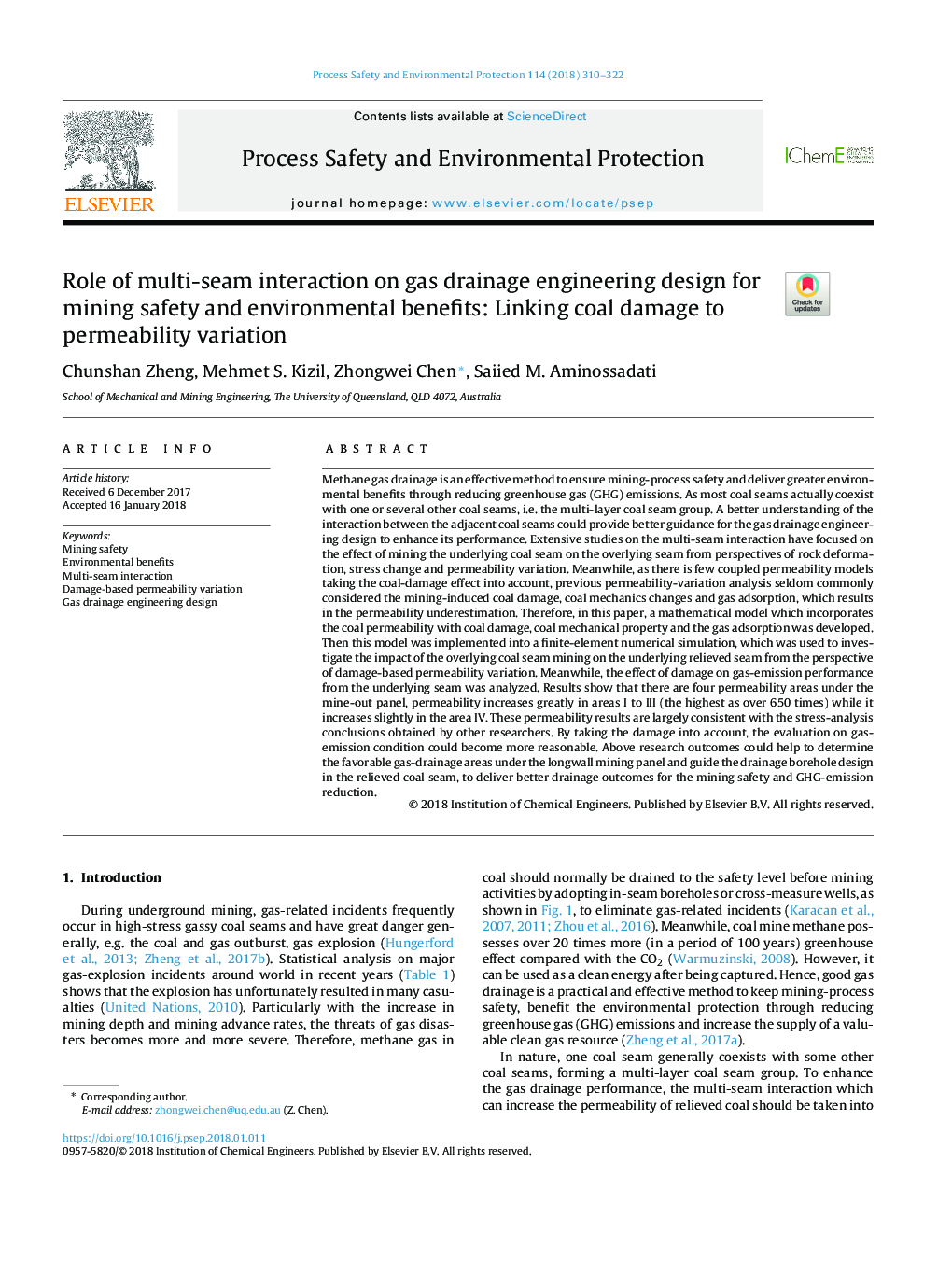| Article ID | Journal | Published Year | Pages | File Type |
|---|---|---|---|---|
| 6974219 | Process Safety and Environmental Protection | 2018 | 13 Pages |
Abstract
Methane gas drainage is an effective method to ensure mining-process safety and deliver greater environmental benefits through reducing greenhouse gas (GHG) emissions. As most coal seams actually coexist with one or several other coal seams, i.e. the multi-layer coal seam group. A better understanding of the interaction between the adjacent coal seams could provide better guidance for the gas drainage engineering design to enhance its performance. Extensive studies on the multi-seam interaction have focused on the effect of mining the underlying coal seam on the overlying seam from perspectives of rock deformation, stress change and permeability variation. Meanwhile, as there is few coupled permeability models taking the coal-damage effect into account, previous permeability-variation analysis seldom commonly considered the mining-induced coal damage, coal mechanics changes and gas adsorption, which results in the permeability underestimation. Therefore, in this paper, a mathematical model which incorporates the coal permeability with coal damage, coal mechanical property and the gas adsorption was developed. Then this model was implemented into a finite-element numerical simulation, which was used to investigate the impact of the overlying coal seam mining on the underlying relieved seam from the perspective of damage-based permeability variation. Meanwhile, the effect of damage on gas-emission performance from the underlying seam was analyzed. Results show that there are four permeability areas under the mine-out panel, permeability increases greatly in areas I to III (the highest as over 650 times) while it increases slightly in the area IV. These permeability results are largely consistent with the stress-analysis conclusions obtained by other researchers. By taking the damage into account, the evaluation on gas-emission condition could become more reasonable. Above research outcomes could help to determine the favorable gas-drainage areas under the longwall mining panel and guide the drainage borehole design in the relieved coal seam, to deliver better drainage outcomes for the mining safety and GHG-emission reduction.
Keywords
Related Topics
Physical Sciences and Engineering
Chemical Engineering
Chemical Health and Safety
Authors
Chunshan Zheng, Mehmet S. Kizil, Zhongwei Chen, Saiied M. Aminossadati,
